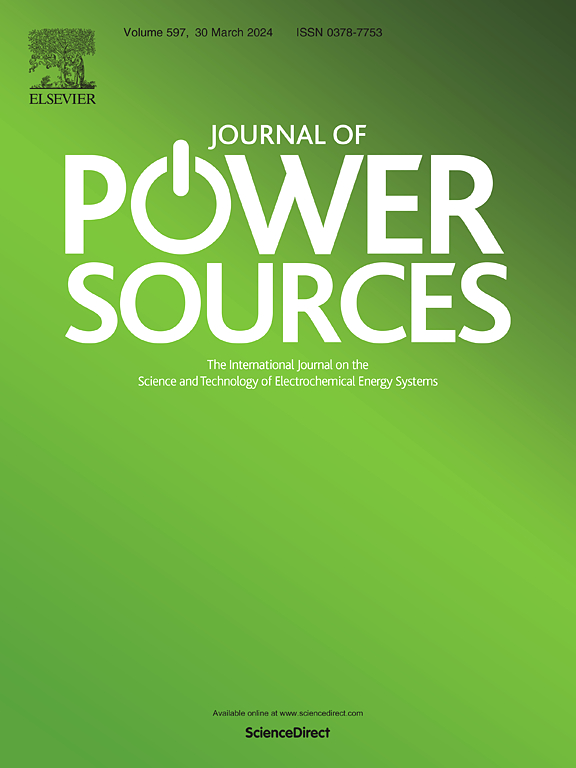Conjugated microporous polymers incorporating pyridine moieties for efficient faradaic supercapacitor energy storage
IF 8.1
2区 工程技术
Q1 CHEMISTRY, PHYSICAL
引用次数: 0
Abstract
Conjugated microporous polymers (CMPs) are significant materials owing to their π-conjugated frameworks and microporous architecture. However, several CMPs have limited electrical conductivity and redox efficiency, making them unsuitable as dynamic supercapacitor electrodes. In this work, we prepared a particular family of redox-active CMPs, namely TPP-DBTh and BTPP-DBTh CMPs, with triphenylpyridine (TPP) and redox-active benzo[1,2-b:4,5-b′]dithiophene-4-dione (DBTh) units for effective supercapacitor energy storage devices. Combining TPP and redox-active DBTh units into CMP skeletons promotes faradaic energy storage, charge transfer, and conductivity. The final CMPs demonstrate a superior specific capacity relative to previously published conventional CMPs, achieving an impressive three-electrode capacitance of up to 221.86 F g−1 at a current density of 0.5 A g−1, along with remarkable stability of up to 87.86 % within 10,000 cycles, marking this as one of the highest specific capacities recorded for CMPs. The TPP-DBTh CMP produces a symmetric two-electrode supercapacitor device, which can maintain 91.81 % of their initial capacitance after 2000 cycles. The TPP-DBTh CMP-based device has a high capacitance of 384.61 F g−1, energy density of 77.13 W h kg−1, and power density of 461.53 W kg−1 at 1.2 V. Our findings offer a straightforward method for combining electroactive moieties to create effective supercapacitor devices.

用于高效法拉第超级电容器储能的包含吡啶分子的共轭微孔聚合物
本文章由计算机程序翻译,如有差异,请以英文原文为准。
求助全文
约1分钟内获得全文
求助全文
来源期刊

Journal of Power Sources
工程技术-电化学
CiteScore
16.40
自引率
6.50%
发文量
1249
审稿时长
36 days
期刊介绍:
The Journal of Power Sources is a publication catering to researchers and technologists interested in various aspects of the science, technology, and applications of electrochemical power sources. It covers original research and reviews on primary and secondary batteries, fuel cells, supercapacitors, and photo-electrochemical cells.
Topics considered include the research, development and applications of nanomaterials and novel componentry for these devices. Examples of applications of these electrochemical power sources include:
• Portable electronics
• Electric and Hybrid Electric Vehicles
• Uninterruptible Power Supply (UPS) systems
• Storage of renewable energy
• Satellites and deep space probes
• Boats and ships, drones and aircrafts
• Wearable energy storage systems
 求助内容:
求助内容: 应助结果提醒方式:
应助结果提醒方式:


